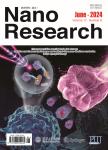Preparation of Highly Crystalline Graphitic Nanocarbon for the Electro-Oxidation of Methanol
Preparation of Highly Crystalline Graphitic Nanocarbon for the Electro-Oxidation of Methanol作者机构:World Class University (WCU) program of Chemical Convergence for Energy & Environment (C2E2) School of Chemical and Biological Engineering Seoul National University Shinlim-dong Kwanak-ku Seoul 151-742 Republic of Korea School of Environmental and Chemical Engineering Specialized Graduate School of Hydrogen and Fuel Cell Engineering Chonbuk National University Jeonju 561-756 Republic of Korea
出 版 物:《Nano Research》 (纳米研究(英文版))
年 卷 期:2011年第4卷第1期
页 面:92-102页
核心收录:
学科分类:0808[工学-电气工程] 081704[工学-应用化学] 0809[工学-电子科学与技术(可授工学、理学学位)] 08[工学] 0817[工学-化学工程与技术] 0805[工学-材料科学与工程(可授工学、理学学位)] 080502[工学-材料学] 0702[理学-物理学]
基 金:the Korea Ministry of Environment under the “The Eco-Technopia 21 Project”and WCU (World Class University) the Korea Science and Engineering Foundation the Ministry of Education, Science and Technology
主 题:Graphitic nanostructured carbon wet-air treatment enhanced crystallinity Pt catalyst
摘 要:Highly crystalline graphitic nanocarbons (GNC) have been prepared by the wet-air treatment of hydrothermally- derived graphitic porous carbon. The materials were characterized by scanning electron microscopy, X-ray diffraction, Raman spectroscopy, and electrochemical methods. The experimental results revealed that the treatment temperature has a significant effect on the morphology and degree of graphitic crystallinity. When GNC was treated at 450 ~C under a wet-air atmosphere, the product (GNC-450) consisted of aggregates of silkworm-shaped carbon nanoparticles with enhanced graphitic characteristics. GNC-450 was evaluated as a catalyst support in the electro-oxidation of methanol. The Pt/GNC-450 catalyst contained smaller Pt particles and had a higher electrochemically active surface area than a commercial carbon black-supported Pt catalyst. In the electro-oxidation of methanol, the Pt/GNC-450 catalyst showed the highest performance among the Pt catalysts examined in this study. The superior catalytic performance appears to be closely related to the enhanced graphitic characteristics with highly dispersed Pt nanoparticles on the graphitic layers, which have a positive effect on the electrochemical performance.



